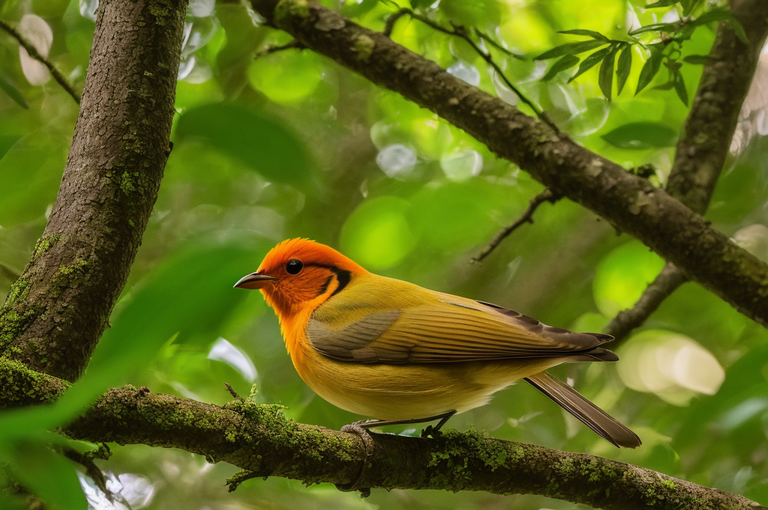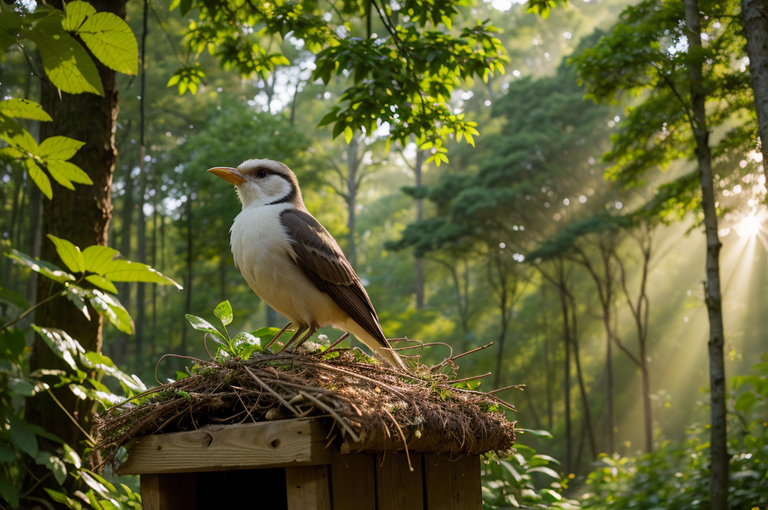Unraveling the Secrets of Bird Longevity: From Tiny Robins to Mighty Albatrosses

The article discusses bird lifespan variations based on species and environment, birds’ potential unique defenses, and possibilities of drawing insights into human health. It also touches on the secrets behind their longevity and endurance in high-stress conditions.
Understanding Bird Lifespan Variations
As morning gives way to the symphony of bird calls from my backyard, I find myself pondering over the intriguing question, how long do birds live in the wild?
Overview of various bird species’ lifespans
Allow me to take you under my bird watcher’s wing as we traverse through the fascinating lifespan differences within the avian world. Birds, like the melodies they croon, come in infinite harmonious variations. Some twitchy sparrows flutter by within a few quick years, while others like the tenacious parrots, bask in the glory of many sunsets, living for decades. The diversity is as wide as their wingspans, each species narrating different tales of survival and existence.
High mortality rate in small birds
Consider the diminutive robins, seemingly delicate and innocent. Sadly, many of these small birds meet their untimely demise before they even get to serenade their second spring. Their high mortality rates, a solemn reminder, that survival in the wild is often a race against time and conditions.
Longer lifespans of seabirds compared to other species
Interestingly, the rhythm of life takes a different beat over vast, salty oceans, where seabirds like the awe inspiring albatrosses cruise. These remarkable creatures often lead lengthy lives, soaring over decades, hinting at a unique survival strategy that is poles apart from their mainland counterparts.
The brilliant hues of bird lifespans serve to further enrich the astounding tapestry of the avian world. With each chirp, tweet and hoot, they make a statement a testament to their resilience and adaptability in the face of life’s varied challenges. Simply put, whether it’s a fleeting flycatcher or a steadfast seagull, every bird sings its own unique song of life.

Techniques for Studying Bird Lifespan
Bird Banding or Ringing Studies for Lifespan Insights
The familiar whisper of early light finds me, Penelope, strolling through the crisp morning air, my thoughts swirling with bird songs and the question: how long do small wild birds live? Here, I delve into the fascinating insights uncovered from the practice of bird banding and ringing. Unique tokens are placed on our feathered friends, clearly marking them, allowing me to trace their intricate journeys, which often meander across the globe. Through their tracks, I glean the nuances of individual birds, their lifespans becoming a tapestry of stories told over time, each detail adding to the wider understanding of avian longevity.
Variations in Lifespans of Birds in Captivity and in the Wild
Observing caged birds in peaceful captivity is starkly different to watching them dart in the wild, each environment subtly altering the rhythm of their lives and consequently, their life spans. My ornithological investigations reveal that a bird shielded from the dicier elements of nature inside a cozy cage often dances with life longer than its wild counterpart. However, these captive birds may miss the effervescent exhilaration of unbound flight, a poignant reminder of the profound influence of the surrounding environment on bird longevity.
Unraveling the Mystery of Bird Longevity Mechanisms
The sun dances on the horizon, and my day draws to a close, leaving me with a puzzling puzzle: the uncharted realm of bird longevity mechanisms. Scientists, myself included, often find ourselves gazing at the brilliant plumage of birds, left wondering at the exact modalities that grant them extended lives. Hidden within the captivating complexity of birds is the essence of their longevity, an enigma that, even to this day, softly flutters just outside our grasp, but beckons us in promising whispers to explore further. The magic that unfolds within these creatures of flight continues to fascinate, inspire, and bewilder a never ending journey into the heart of avian mystery.

Unique Defenses and Metabolic Features of Birds
Dwelling upon the feathered friends that share our world, one might delightfully uncover that they possess intriguing defenses and metabolic peculiarities. To begin with, it’s said in hushed whispers among ornithologists that these creatures might harbor unique defenses or repair mechanisms that aid their Winged Odyssey. This is a hypothesis borne by the fact that birds, despite their elevated metabolic rates, boast remarkable longevity. This suggests a fascinating departure from the customary effects of metabolic stress a marvel that subtly challenges conventional wisdom on how long do wild birds live.
Possible Unique Defenses or Repair Mechanisms in Birds
In the face of daunting physical demands, our feathered counterparts appear to wear an invisible armor of hearty bird robustness. The sturdy resilience they demonstrate could be attributed to potential unique defenses or repair mechanisms that actively combat age related damage.
Birds’ Ability to Manage High Energy Demands
Remarkably, even amid their energetic whirlwind of life, birds seem to manage high energy demands effortlessly. This might explain their surprising endurance, living far longer than what we might ordinarily envisage for creatures burning energy at such fervent rates.
Effect of High Sugar Levels on Bird Aging
Our journey of exploration reveals another fascinating trait unique to birds. Unlike their human friends, high blood sugar levels do not hasten the aging process in birds. This indicates distinct physiological adaptations birds have made to sweeten their journey through life, unhindered by the ticking clock of age.
These avian qualities may appear implausibly whimsical like a nightingale’s strain, but they are grounded in thrilling scientific possibility. Indeed, to venture deeper into understanding these feathered marvels is to flirt with the enigmatic dance of nature and science unfolding before us a spectacle as awe inspiring as the migratory journey of an Arctic tern.

Studying Bird Lifespan for Human Health Insights
Each day, as the early dawn breaks, I find myself immersed in the intriguing world of avian life wondering, how long does a wild bird live? The answer to this not only unravels the secrets of avian longevity, but may hold the keys to extending human life expectancy.
The Potential Impact of Bird Lifespan Studies on Human Health
In the whispers of the researchers’ quest for longevity, birds hold important clues. With each species living a different lifespan while facing similar threats as us—disease, aging, and environmental stresses— understanding their survival strategies can offer valuable insights for improving our health and longevity. Their intricate navigation through life and death holds such profound echoes of our own existence that exploring their world feels like flying into the heart of human survival itself.
Insights from Birds’ Evolutionary Resilience and Adaption to Ocean Life
Among the avian species, seabirds exhibit impressive evolutionary resilience. Their adaptation to ocean life and longevity provides me with a model to unravel the tethers of survival what it is to thrive against a barrage of elemental forces. Observing them glide gracefully above stormy waters or beat their wings against the salt laden winds with sheer determination, I realize their survival is a testament to their ability to adapt and endure.
Indeed, their resilience could teach us a great deal about our own ability to withstand life’s tempests. As we navigate through our lives with the desire for longevity, I believe there is much we can learn from our feathered friends. Their secrets may just prove to be our most valuable guide in the turbulent journey towards extended life and health.
Now as I listen to the rhythmic pulses of waves colliding with my notes on avian insights, the life of every bird I study seems to harmonize with our shared goal of survival, subtly reminding me just how interconnected we all truly are.
Unique Aspects of Bird Life: Migration
Waking with the dawn, the likeness of the Arctic Tern begins to flutter in the canvas of my thoughts. Famed for its remarkable voyages, this bird’s annual migration stretches a staggering 24,000 miles, a mammoth journey truly deserving of awe. These tireless journeys of endurance, seared in every feather, help us unravel the secrets of their extraordinary lifespan answering queries like how long do birds live in the wild?
The Majestic Arc of the Arctic Tern’s Migration
The Arctic Tern’s annual marathon in the skies, is, to me, nature’s most captivating symphony. This tireless traveler embarks on a round trip journey stretching approximately 24,000 miles from the Arctic breeding grounds to the Antarctic feeding waters, a physical testament to bird tenacity. The harsh demands of this colossal migration, yet another brushstroke in the portrait of how long do small wild birds live and how long do wild birds live alike.
The Role of Migration in Determining Bird Lifespan
Beyond the romanticism of far reaching flights, bird migration offers a serious scientific lens to scrutinize survival strategies and longevity. The mileage clocked during migratory marathons impacts the energy expenditure of these soaring creatures, thus hinting at their lifespan adding to the discourse of how long does a wild bird live?
These relentless journeys may well be etched in their feathers, but their toll paints a vivid picture of bird longevity. Their life isn’t always just a carefree symphony in the sky; it is a testament to their remarkable resilience and survival skills.
As we tune our ears to the cacophonies of the wild, let us remember, each winged melody sings of a story a story of migration, survival, and an inseparable unity with the natural dance of the cycles. That, my dear readers, is the tantalizing allure of our feathery friends.


